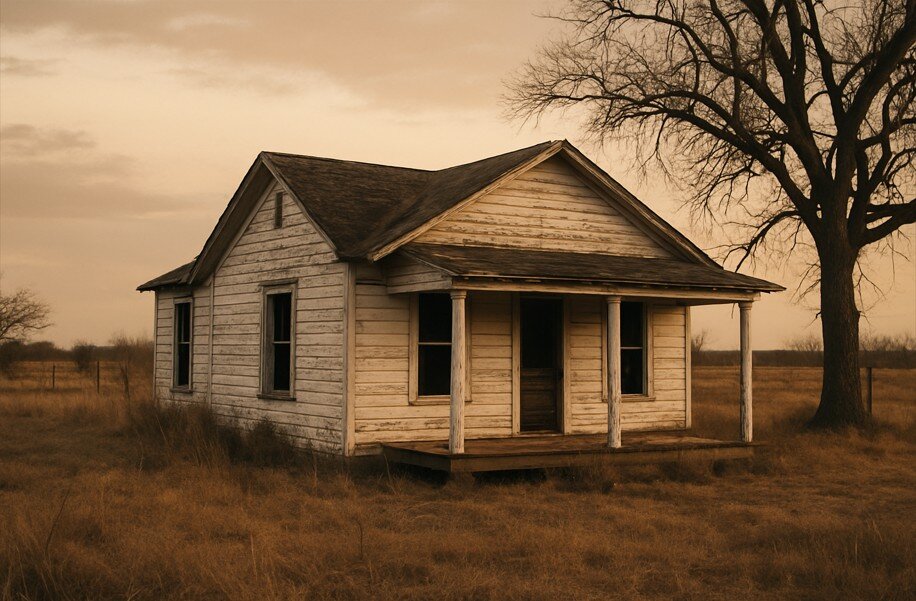
What Happens When a House Is Left Vacant in Texas?
When a house is left vacant, it no longer benefits from regular maintenance, climate control, or occupancy that helps deter pests, trespassers, and deterioration. In Texas, where temperatures and weather patterns are intense, the decline can happen fast. Minor wear becomes major damage in a matter of months, especially if no preventative steps are taken.
How Long Does It Take for a Vacant House to Deteriorate?
The First 30 Days: Minor Cosmetic Wear
In the first month, cosmetic wear begins. Dust accumulates, weeds grow, and without airflow or cleaning, surfaces start to look aged. Paint may begin to fade or chip in direct sun, and small leaks or drips may go unnoticed.
3 to 6 Months: Structural Weaknesses Begin
Around the 3-month mark, more serious issues can begin. Moisture buildup in bathrooms or attics may lead to mold growth. HVAC systems may begin to break down from disuse. Pests often move in, especially if food was left behind or small openings exist in walls or roofs.
1 Year and Beyond: Major System Failures and Damage
After a year, deterioration accelerates. Plumbing systems may corrode, foundations can shift, and mold problems can spread. Electrical issues, roof leaks, and rot can compromise the structural integrity of the home. By this point, repairs are often expensive and time-consuming.
Key Factors That Speed Up Home Deterioration in Texas
| Factor | Impact on Home Deterioration |
| Poor Ventilation & Humidity | Traps moisture in walls and ceilings, leading to mold, mildew, and rot. |
| Extreme Heat | Warps wood, dries out caulking, and deteriorates roofing materials. |
| Pest Infestations | Vacant homes attract rodents, termites, and insects, causing hidden damage. |
| Vandalism & Theft | Unmonitored properties are targets for break-ins and material theft. |
The Impact of Texas Climate on Empty Properties
| Climate Condition | Summary of Impact |
| Summer Heat & Humidity | Causes fast interior and exterior damage like warped wood and faded paint. |
| Winter Freezes | Risk of burst pipes and flooding in unheated homes. |
| Severe Storms | Hail and wind damage roofs, windows, and fences. |
| Trapped Moisture | Leads to mold, mildew, and warped structures in unventilated homes. |
| Soil Shifting | Causes foundation cracks due to drought and moisture changes. |
Warning Signs of a Deteriorating Vacant House
| Category | Warning Signs |
| Exterior Signs of Neglect | Peeling paint, cracked siding, overgrown grass, and warped fences—can also lead to HOA or city fines. |
| Structural Red Flags | Foundation cracks, misaligned doors/windows, sagging roofs or floors—potential signs of major issues. |
| Interior Damage and Decay | Moldy odors, water stains, discolored walls, or damaged floors—often caused by moisture or plumbing problems. |
| Utility and System Failures | Broken HVAC, corroded pipes, or electrical shorts—indicate system breakdown from lack of use or upkeep. |
Financial and Legal Risks of Leaving a Home Vacant
| Risk Category | Description |
| Property Value Decline Over Time | Unmaintained homes can lose 10–20% of their value in a year, especially in competitive housing markets. |
| Vandalism, Theft, and Squatting | Vacant homes are more likely to be targeted for break-ins, theft, or illegal occupation. |
| HOA Violations and City Code Fines | Neglected maintenance may result in citations, fines, or forced repairs by HOAs or local authorities. |
| Tax and Financial Burdens | Vacant properties still accrue property taxes, base utility fees, and insurance costs—without any income. |
| Legal Liability for Injuries | Owners may be held liable for injuries on the property, including trespassers injured due to unsafe conditions. |
How to Protect a Vacant House from Damage
| Protective Measure | Description |
| Use Timers for Lights and Smart Security | Light timers and smart cameras create the illusion of occupancy, deterring burglars and vandals. |
| Maintain Landscaping to Avoid HOA Issues | Regular lawn care and exterior upkeep prevent fines and maintain curb appeal and structural integrity. |
| Regular Inspections and Repairs | Schedule check-ins every 30–60 days to catch and address problems early, avoiding costly repairs. |
| Keep Utilities On (Especially HVAC) | Keeping power and climate control on helps regulate humidity and prevents mold growth or pipe bursts. |
FAQ
Can a Vacant House Be Insured in Texas?
Yes, but standard homeowners insurance may not cover vacant homes after 30–60 days. You’ll likely need a vacant home insurance policy, which costs more but covers specific risks like vandalism, weather damage, and liability.
Checklist: How to Prepare Your House for Vacancy
- Notify your insurance company
- Forward mail and cancel services
- Turn off the water or winterize pipes
- Keep lights on timers
- Schedule regular inspections
- Secure all entry points
- Maintain landscaping
What Insurance Covers for Empty Homes in Texas
Vacant home insurance typically includes:
- Property damage (fire, storms, vandalism)
- Liability protection (for injuries on-site)
- Optional coverage for theft and break-ins
- Add-ons for water damage or pest-related repairs